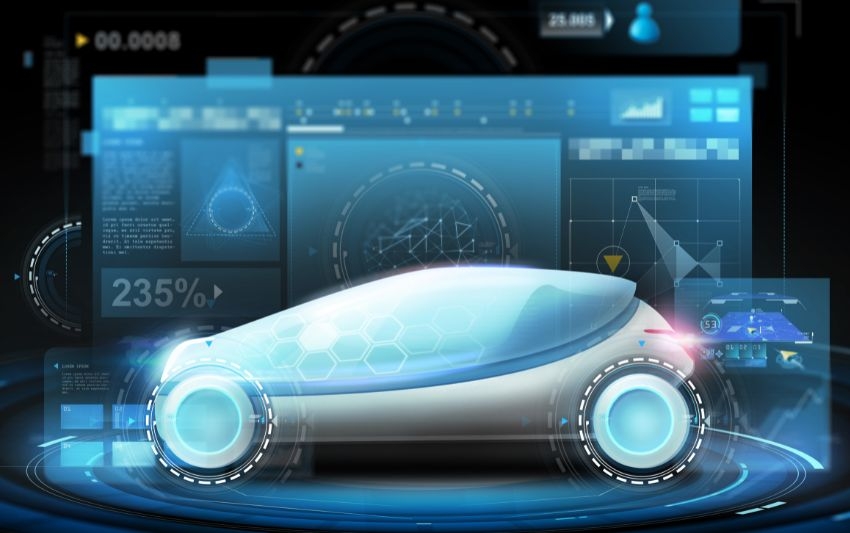The automotive industry has witnessed remarkable advancements in recent years, paving the way for an exciting future of cars. From the rise of electric vehicles to the development of autonomous driving, the road ahead promises to revolutionize the way we travel. This article delves into the various aspects that shape the future of cars, exploring the advantages and challenges of electric vehicles, the potential of autonomous driving, the enhanced driving experience through connected cars, the use of sustainable materials and manufacturing processes, advanced safety features, the role of artificial intelligence, the impact of ride-sharing services, and the future of car ownership.
The rise of electric vehicles: Advantages and challenges
Electric vehicles (EVs) have emerged as a viable alternative to traditional combustion engine cars, offering numerous advantages. Firstly, EVs are environmentally friendly, producing zero emissions and reducing our carbon footprint. They contribute to cleaner air and help combat climate change. Secondly, EVs offer lower operating costs as they require less maintenance and no gasoline. This translates to significant savings in the long run. Additionally, EVs provide a quiet and smooth driving experience, thanks to their electric motors, which eliminate noise and vibrations.
However, the widespread adoption of EVs also poses challenges. One major hurdle is the limited charging infrastructure. While charging stations are increasing in number, the availability is still not widespread enough to address range anxiety concerns. Another challenge is the cost of electric vehicles, which remains higher compared to conventional cars. However, as technology advances and production scales up, the costs are expected to decrease, making EVs more affordable and accessible to a broader market.
Autonomous driving: The future of mobility
Autonomous driving has the potential to revolutionize mobility, placing safety, convenience, and efficiency at the forefront. Self-driving cars, equipped with a range of sensors and artificial intelligence, can navigate roads without human intervention. This technology promises numerous benefits. Firstly, it enhances road safety by minimizing human error, which is responsible for the majority of accidents. Autonomous vehicles can react faster and make split-second decisions based on real-time data, reducing the risk of collisions. Secondly, autonomous driving offers increased mobility for individuals who are unable to drive, such as the elderly or disabled. It opens up new possibilities for transportation and independence. Lastly, self-driving cars can optimize traffic flow, reducing congestion and improving overall efficiency on the roads.
However, there are still challenges to overcome before fully autonomous cars become mainstream. One major challenge lies in ensuring the safety and reliability of the technology. Extensive testing and regulations are necessary to build trust and ensure that self-driving cars can operate efficiently in various conditions. Ethical considerations also come into play, such as determining how autonomous vehicles should prioritize decisions in potential accident scenarios. Nonetheless, with continued research and development, the future of autonomous driving holds great promise.
Connected cars: Enhancing the driving experience
Connected cars are vehicles equipped with internet connectivity and a range of smart features that enhance the driving experience. These features include real-time navigation, infotainment systems, remote control functionalities, and vehicle-to-vehicle communication. With connected cars, drivers can access information on traffic conditions, find the most efficient routes, and receive real-time updates on weather and road hazards. Infotainment systems allow for seamless integration with smartphones, enabling hands-free calling, music streaming, and access to various applications. Moreover, remote control functionalities enable drivers to lock and unlock their cars, control climate settings, and even start the engine remotely.
The benefits of connected cars extend beyond convenience. Vehicle-to-vehicle communication enables cars to share information with each other, enhancing safety on the roads. For example, if a car ahead experiences sudden braking, it can send a signal to nearby vehicles to alert them and prompt them to slow down. This technology has the potential to prevent accidents and improve overall road safety. Furthermore, connected cars provide valuable data that can be utilized to improve traffic management, optimize energy consumption, and develop smarter transportation systems.
Sustainable materials and manufacturing processes
As the automotive industry moves towards a more sustainable future, the use of eco-friendly materials and manufacturing processes becomes crucial. Traditional manufacturing methods often involve significant energy consumption and carbon emissions. However, advancements in technology and materials are enabling the development of more sustainable alternatives. For instance, manufacturers are exploring the use of lightweight materials, such as carbon fiber and aluminum, to reduce the weight of vehicles and improve fuel efficiency. Additionally, bio-based materials and recycled materials are gaining traction, minimizing the environmental impact of car production.
Furthermore, sustainable manufacturing processes are being adopted to minimize waste and energy consumption. For example, 3D printing is revolutionizing car manufacturing by allowing parts to be produced with minimal waste and reducing the need for complex assembly lines. Additionally, manufacturers are investing in renewable energy sources to power their production facilities, further reducing their carbon footprint. By embracing sustainable materials and manufacturing processes, the automotive industry can contribute to a greener future and mitigate the environmental impact of car production.
Advanced safety features: Protecting drivers and passengers
The integration of advanced safety features in cars is revolutionizing road safety and protecting both drivers and passengers. Traditional safety features, such as seatbelts and airbags, have been instrumental in reducing injuries and fatalities. However, technological advancements have paved the way for more advanced safety systems. For instance, collision avoidance systems utilize sensors and cameras to detect potential collisions and alert the driver or take autonomous action to prevent an accident. Lane departure warning systems help prevent accidents caused by drifting out of lanes, while blind-spot detection systems provide warnings when there are vehicles in the driver’s blind spots.
Moreover, emerging technologies such as adaptive cruise control and automatic emergency braking further contribute to road safety. Adaptive cruise control maintains a safe distance from the vehicle ahead, automatically adjusting the speed to match the traffic flow. Automatic emergency braking detects potential collisions and applies the brakes to prevent or mitigate the impact. These advanced safety features not only protect drivers and passengers but also contribute to the overall reduction of accidents on the roads.
The role of artificial intelligence in cars
Artificial intelligence (AI) plays a pivotal role in shaping the future of cars. AI algorithms enable cars to process vast amounts of data, make informed decisions, and adapt to changing road conditions. For instance, AI-powered systems can analyze sensor data to identify pedestrians, cyclists, and other vehicles, enabling autonomous vehicles to navigate safely. Natural language processing allows for voice commands, making it easier and safer for drivers to interact with infotainment systems. AI-based predictive analytics can also anticipate maintenance needs, helping drivers and manufacturers address potential issues before they become major problems.
Furthermore, AI contributes to the development of smart transportation systems. Traffic management systems powered by AI can optimize traffic flow, reducing congestion and improving travel times. AI algorithms can analyze real-time data from various sources, such as traffic cameras and GPS, to identify patterns and make predictions. This information can then be used to implement dynamic traffic control measures, such as adjusting traffic signal timings or suggesting alternative routes to alleviate congestion. The integration of AI in cars and transportation systems holds great potential for enhancing efficiency, safety, and overall user experience.
The impact of ride-sharing services on the future of transportation
The emergence of ride-sharing services, such as Uber and Lyft, has had a significant impact on the transportation landscape. These services have revolutionized the way people travel, offering convenient and affordable alternatives to traditional car ownership. Ride-sharing services utilize mobile apps to connect passengers with drivers, making it easy to request a ride and pay for the service. This model has gained popularity due to its flexibility, cost-effectiveness, and reduced dependency on private car ownership.
Ride-sharing services have several implications for the future of transportation. Firstly, they contribute to reducing traffic congestion by decreasing the number of private cars on the roads. This has a positive impact on the environment and overall travel times. Secondly, ride-sharing services provide increased accessibility, especially in areas with limited public transportation options. They offer a convenient alternative for individuals who do not own cars or prefer not to drive. Lastly, ride-sharing services have the potential to support the transition to electric and autonomous vehicles. As these technologies become more prevalent, ride-sharing companies can incorporate them into their fleets, further enhancing their environmental benefits and safety features.
The future of car ownership: Subscription models and shared mobility
The future of car ownership is undergoing a paradigm shift, with subscription models and shared mobility gaining traction. Traditional car ownership involves purchasing a vehicle outright or through financing and assuming full responsibility for maintenance, insurance, and other associated costs. However, subscription models offer an alternative approach, allowing individuals to pay a monthly fee for access to a range of vehicles. This model provides flexibility, as subscribers can choose different cars based on their needs and preferences. Additionally, subscription services typically include maintenance, insurance, and other services, simplifying the overall ownership experience.
Shared mobility, on the other hand, refers to the concept of multiple individuals sharing a vehicle. Car-sharing services, such as Zipcar, enable people to rent cars for short periods, typically by the hour or day. This eliminates the need for individual car ownership, as people can access a vehicle whenever they need it without the long-term commitment. Shared mobility not only reduces the number of cars on the roads but also promotes a more efficient use of resources.
Both subscription models and shared mobility offer potential benefits, such as reduced costs, increased convenience, and minimized environmental impact. As these models continue to evolve and gain popularity, they have the potential to transform the way we think about car ownership and mobility.
Conclusion: Embracing the exciting future of cars
The future of cars holds immense promise, with advancements in technology revolutionizing the automotive industry. From electric vehicles that reduce emissions and operating costs to autonomous driving that enhances safety and convenience, the road ahead is filled with exciting possibilities. Connected cars enrich the driving experience through seamless integration with smart features, while sustainable materials and manufacturing processes contribute to a greener future. Advanced safety features protect drivers and passengers, while artificial intelligence brings intelligence and adaptability to cars. The emergence of ride-sharing services and the shift towards subscription models and shared mobility reshape the concept of car ownership.
As we embrace the exciting future of cars, it is crucial to continue investing in research and development, infrastructure, and regulations that support these innovations. Collaboration between manufacturers, policymakers, and technology companies is essential to ensure the successful integration of these advancements into our transportation systems. By harnessing the potential of technology and embracing sustainable practices, we can create a future of cars that is safer, more efficient, and environmentally friendly. Let us embark on this journey of innovation and reimagine the way we move on the roads.
Call to Action
Join us in embracing the future of cars! Stay informed about the latest advancements, test drive electric vehicles, explore shared mobility options, and support sustainable practices in the automotive industry. Together, we can revolutionize the road and shape a future where transportation is safer, more efficient, and environmentally conscious.





